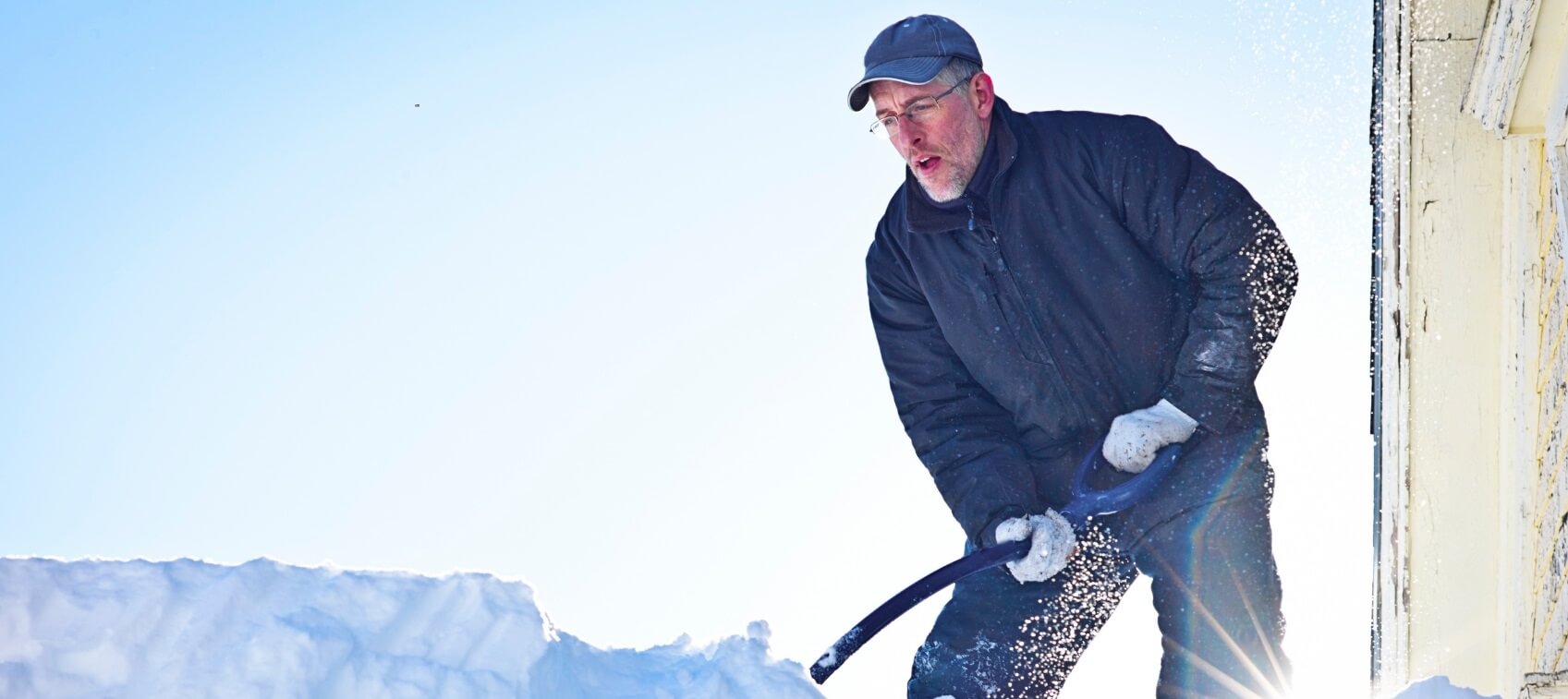
You will often hear warnings that shoveling snow can cause a heart attack and many people shake that off as a myth. But shoveling snow can be a true heart danger.
For a study published in the journal Clinical Research in Cardiology, researchers identified 500 patients who arrived at the hospital with heart problems over two winters. Seven percent of those patients reported they were shoveling snow when their symptoms started. The most vulnerable were men, average age 63, with a family history of premature cardiovascular disease.
Similarly, in a 2009 study which appeared in The American Journal of Emergency Medicine, researchers collected data from the emergency wards in 6,100 hospitals during a 17-year period and found that cardiac-related incidents accounted for 6.7% of all snow-related injuries—resulting in half of all snow-related hospitalizations and 1,647 deaths.
Why Shoveling Snow Can Provoke a Heart Attack
One of the major reasons shoveling snow can lead to a heart attack is that people tend to hold their breath on exertion—such as lifting heavy shovelfuls of snow. Breath holding slams the diaphragm right up into the heart, squeezing it and impeding blood flow. This is known as a "Valsalva maneuver."
Another reason why snow shoveling can lead to a heart attack is that it’s an activity we do when it’s cold outside. Exercising in the cold can cause your blood vessels to constrict and raise your blood pressure—even provoking coronary artery spasms. Plus, if you’re rushing to get your driveway cleared so you can leave to go to work, the stress can up your heart attack risk even further.
Breathing in really cold air can be quite provocative for the coronary arteries. For instance, my wife Jan once worked with a 45-year-old cardiac rehab patient who had suffered a heart attack while working in a freezer. His coronary arteries had no blockages, so the damage had been done by prolonged arterial spasm provoked by extremely cold air. He had to sell his beloved New England farm and move to a warmer climate.
We also find that people who are normally sedentary are at higher risk of a heart attack while shoveling snow than those who exercise regularly. In two studies published in the New England Journal of Medicine, 1,000 patients were interviewed soon after they were hospitalized for a heart attack to determine what their activities were during the hour before the onset of their symptoms.
The studies found that although heavy physical exertion was strongly associated with an increased risk of a heart attack, people who did no regular exercise had a much higher relative risk of having a heart attack after unexpected bouts of heavy exercise. The patients who exercised five times or more per week over a long period of time had substantially lower relative rates of heart attacks triggered by strenuous exertion.
How to Protect Yourself While Shoveling Snow
If you have cardiovascular issues, to avoid a heart attack while shoveling snow you should let someone else do it for you. Hire a high school student or plow service, especially if the snow is deep and wet.
If that's out of the question, use a self-propelled snow blower during milder temperatures after the snowstorm has passed, and be sure to be conscious of your breathing throughout the effort as you walk behind it.
Should you decide to shovel snow on your own:
- Wait for milder temperatures
- Find someone to help you
- Warm up and hydrate well before you start to shovel
- Go slowly, lifting only small amounts of snow at a time
- Pace yourself and rest frequently
Remember, those who have a family history of premature heart disease (heart attack or another cardiac issue before age 45) are at higher risk of having a heart attack while shoveling snow. So, use extra caution if that’s the case for you.
It’s Also Important to Listen to Your Body
If you feel ill or develop shortness of breath, chest discomfort, lightheadedness (or dizziness), heart palpitations, jaw pain, arm pain/numbness, leg cramps, or tightness in the lungs—stop shoveling.
If the symptoms persist after 3–5 minutes of rest, seek medical attention immediately! This is one of those times when it’s better to be safe than sorry. And remember to chew on an aspirin while you await medical assistance.
RESOURCES
- Daniel W. et al. American Journal of Emergency Medicine 2011; 29(1): 11-17.
- Robert N. et al. Clinical Research in Cardiology 2012; 101: 11-15


